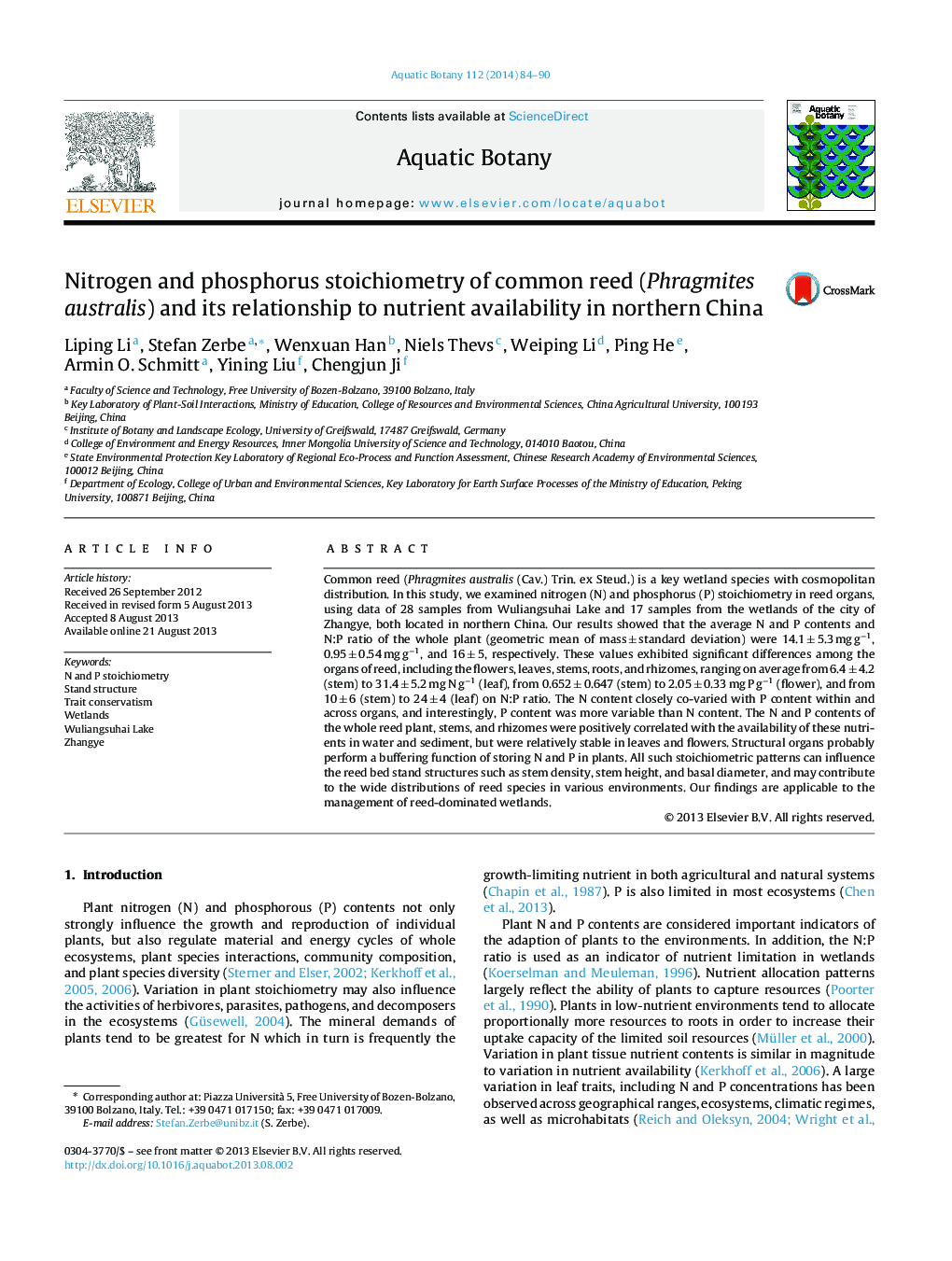| Article ID | Journal | Published Year | Pages | File Type |
|---|---|---|---|---|
| 4527810 | Aquatic Botany | 2014 | 7 Pages |
•Both nitrogen (N) and phosphorus (P) contents differ across reed organs.•The P content in reed is more variable than the N content.•Reed N and P contents are more stable in metabolic and reproductive organs.•Structural organs probably perform a buffering function of storing N and P in reed plants.•The N and P stoichiometry of reed influences the stand structure.
Common reed (Phragmites australis (Cav.) Trin. ex Steud.) is a key wetland species with cosmopolitan distribution. In this study, we examined nitrogen (N) and phosphorus (P) stoichiometry in reed organs, using data of 28 samples from Wuliangsuhai Lake and 17 samples from the wetlands of the city of Zhangye, both located in northern China. Our results showed that the average N and P contents and N:P ratio of the whole plant (geometric mean of mass ± standard deviation) were 14.1 ± 5.3 mg g−1, 0.95 ± 0.54 mg g−1, and 16 ± 5, respectively. These values exhibited significant differences among the organs of reed, including the flowers, leaves, stems, roots, and rhizomes, ranging on average from 6.4 ± 4.2 (stem) to 31.4 ± 5.2 mg N g−1 (leaf), from 0.652 ± 0.647 (stem) to 2.05 ± 0.33 mg P g−1 (flower), and from 10 ± 6 (stem) to 24 ± 4 (leaf) on N:P ratio. The N content closely co-varied with P content within and across organs, and interestingly, P content was more variable than N content. The N and P contents of the whole reed plant, stems, and rhizomes were positively correlated with the availability of these nutrients in water and sediment, but were relatively stable in leaves and flowers. Structural organs probably perform a buffering function of storing N and P in plants. All such stoichiometric patterns can influence the reed bed stand structures such as stem density, stem height, and basal diameter, and may contribute to the wide distributions of reed species in various environments. Our findings are applicable to the management of reed-dominated wetlands.
